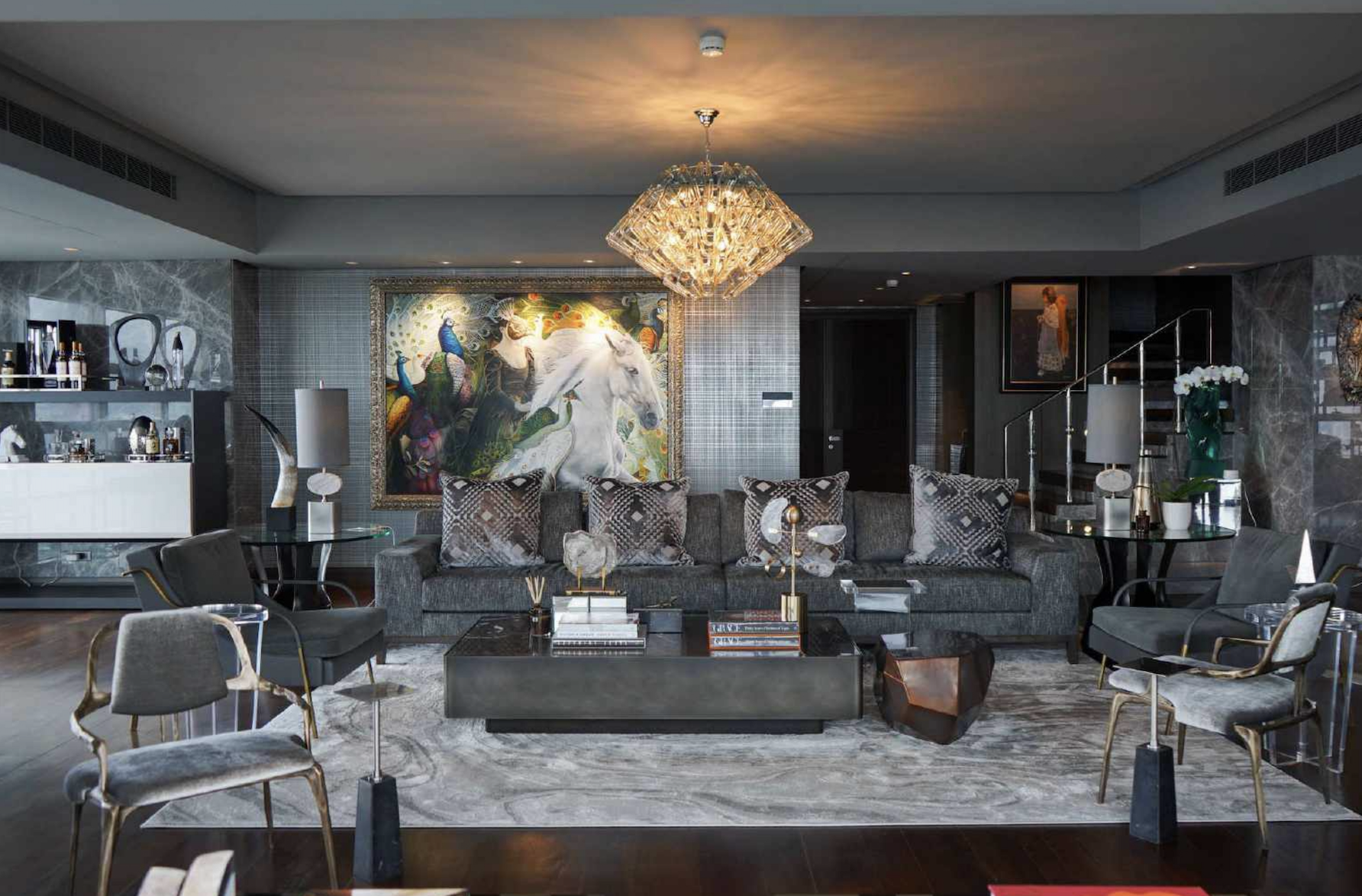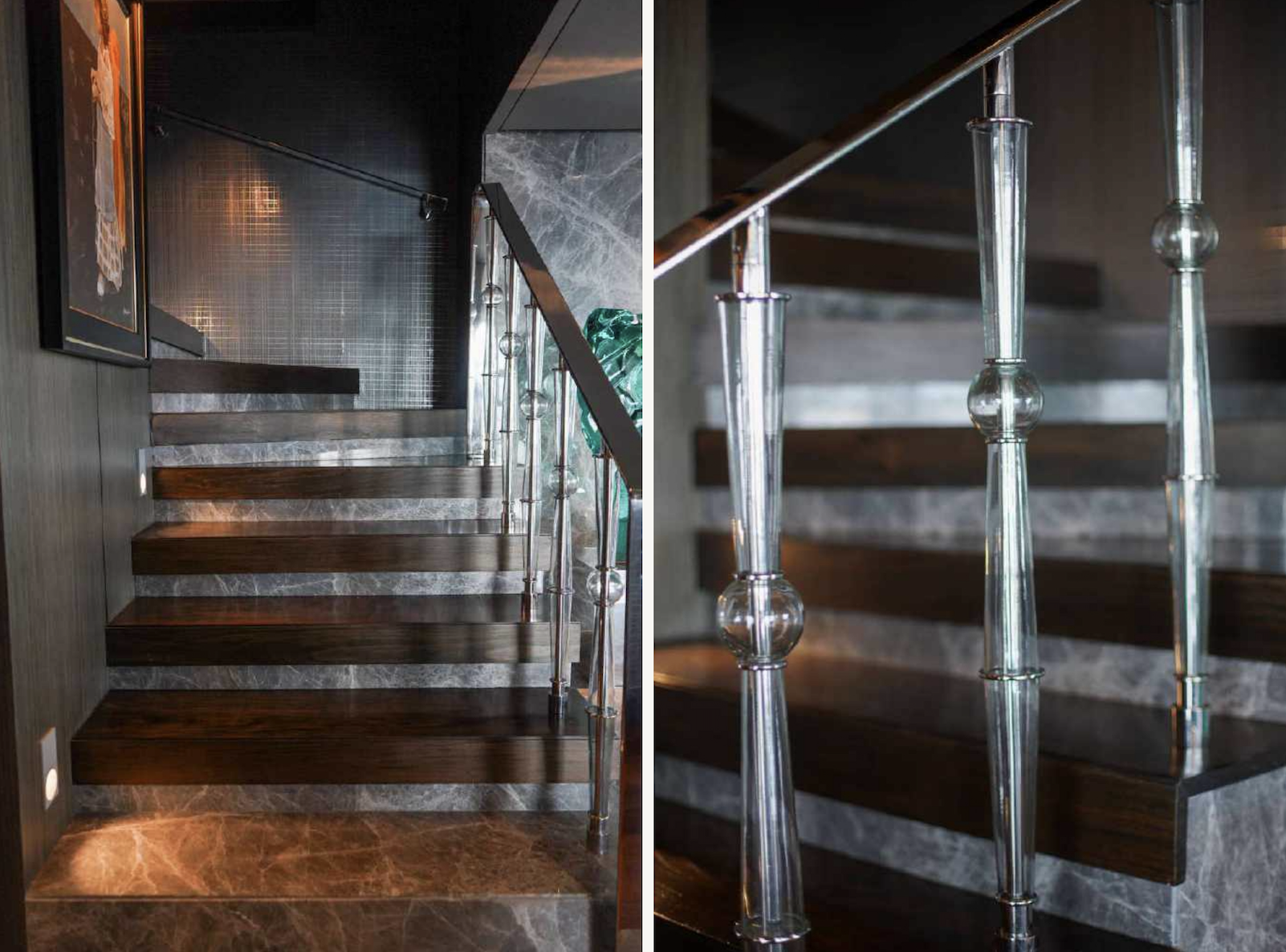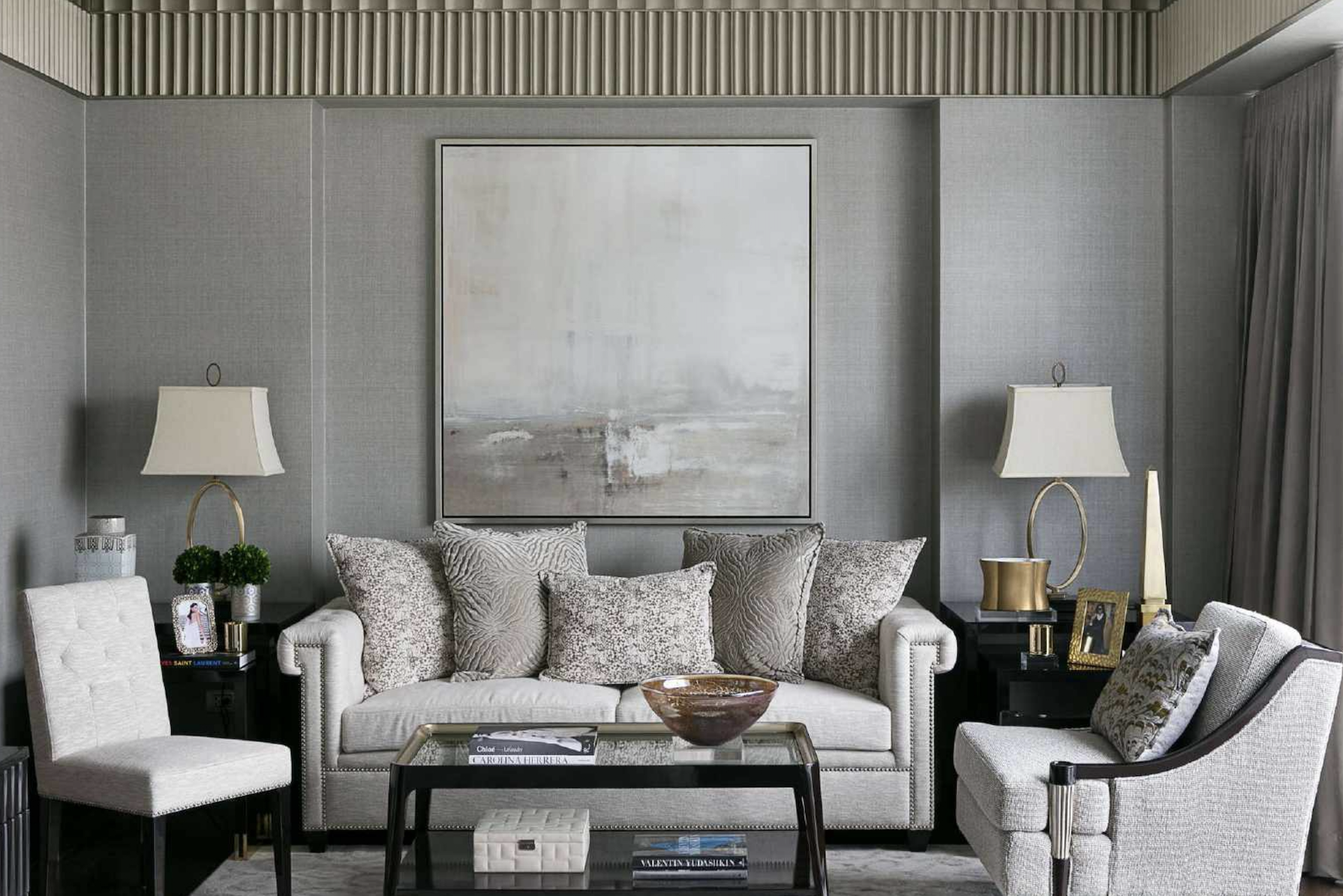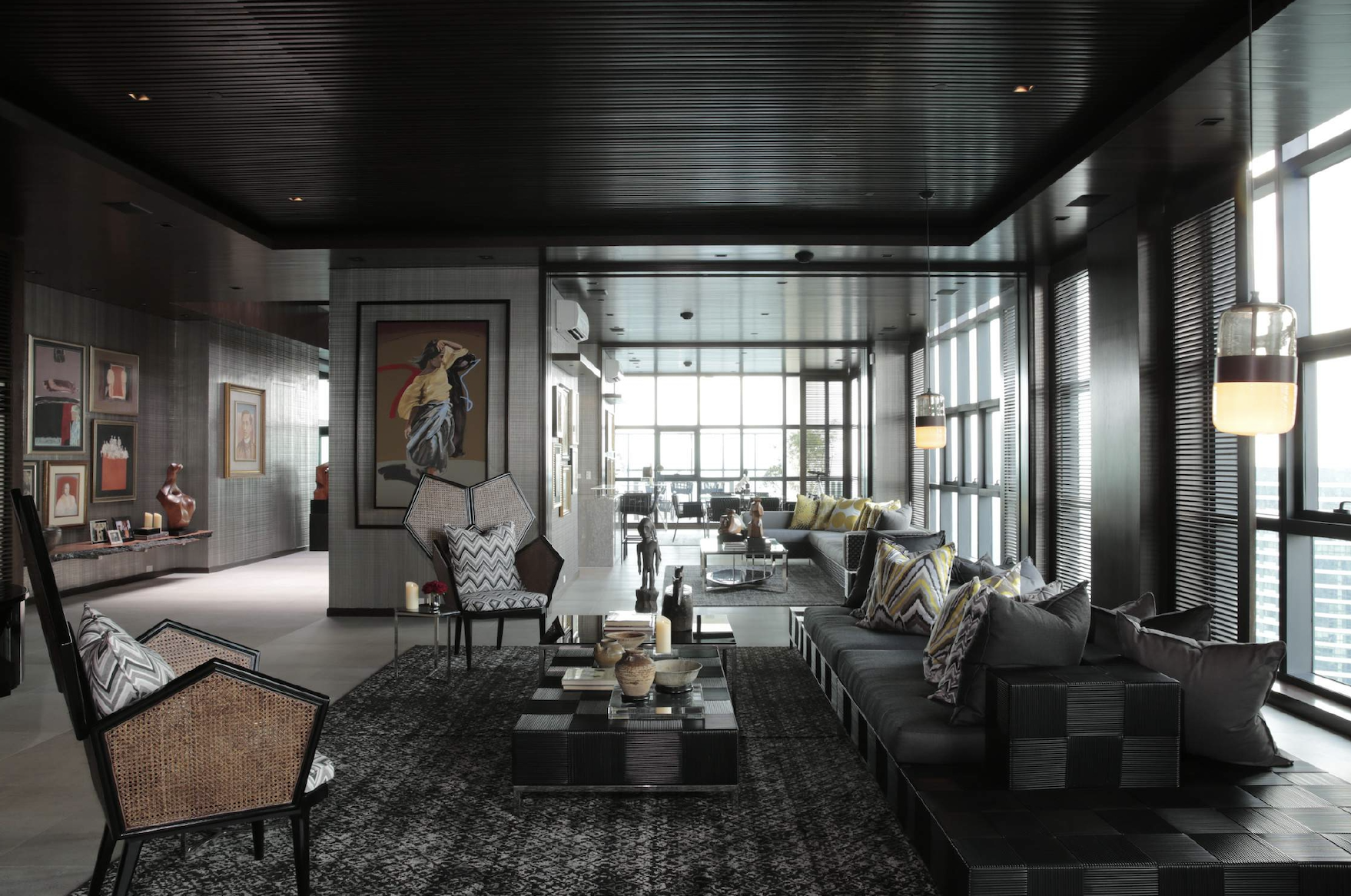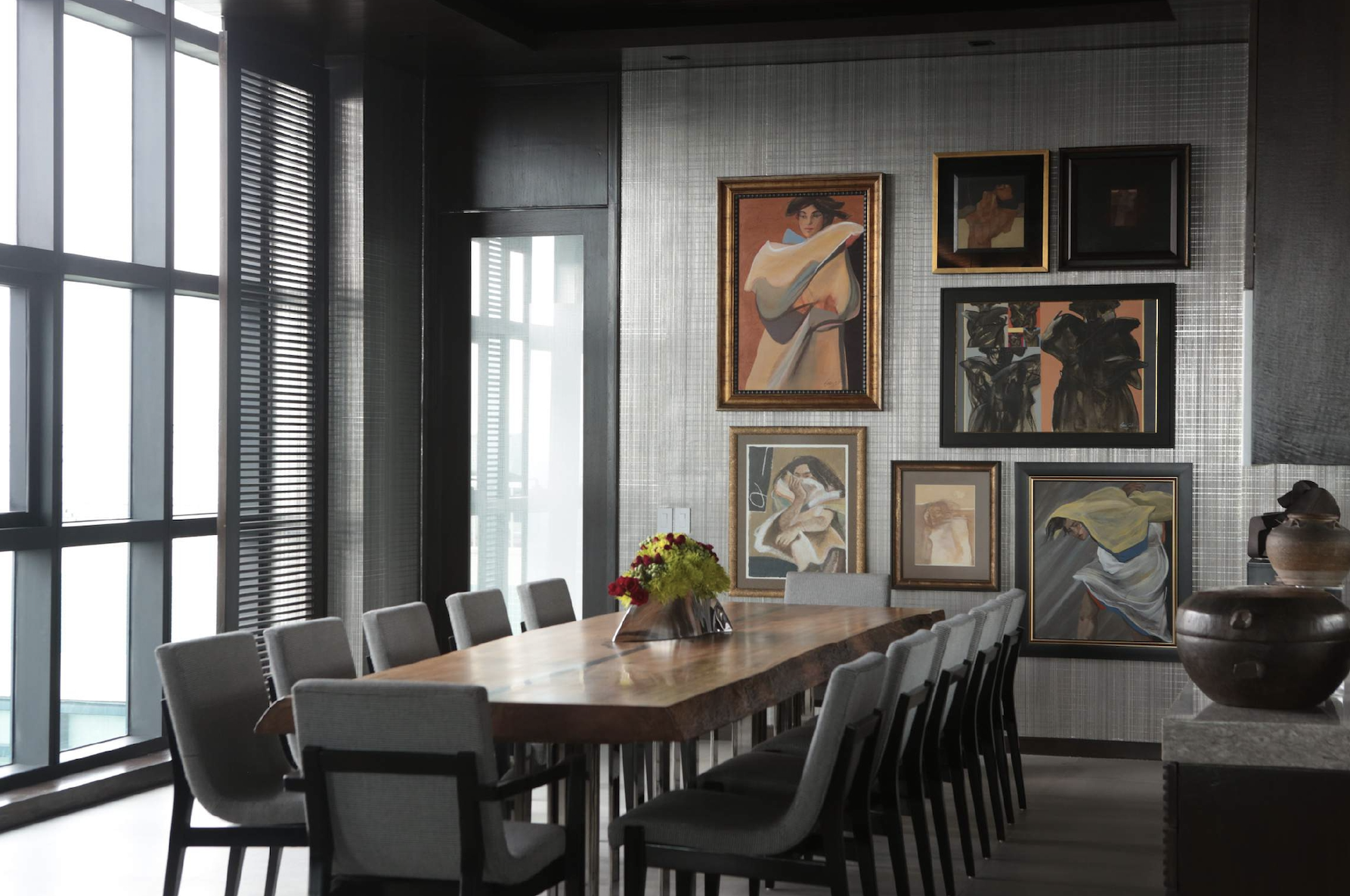Sisters Ivy and Cynthia Almario are the founders of Atelier Almario, an award-winning interior design firm based in the Philippines. Ivy graduated with Bachelor of Arts in Interior Design from the University of Santo Tomas and Cynthia graduated from Maryknoll College. They lived and worked in Los Angeles for fifteen years before returning to Manila to establish their practice.
Together, Ivy and Cynthia work collaboratively to bring a unique perspective to their projects, creating spaces that are both beautiful and functional. They have worked on a diverse range of projects, from high-end residential properties to commercial spaces such as hotels and restaurants. Their work has been recognised both locally and internationally, with features in international and local publications.
Can you tell us about your design philosophy and how has your experience in Los Angeles influenced your work?
Ivy: Our interior design firm was founded after a decade of overseas experience in Los Angeles, which inevitably left an indelible mark on our design approach and philosophy. At the core of our approach is the belief that interior design is both a science and a craft, as well as a business. We learned to be systematic in our approach to design deliverables and the importance of proper construction documentation. Cynthia, in particular, brings to our practice her expertise and experience in furniture selections and material specifications.
However, our personal design philosophy is what sets us apart. We value direct communication and relationship-building with all stakeholders in a project, working closely and cohesively with the team of suppliers, interior fit-out contractors, bringing them from project to project whenever possible. This traditional way of doing business has allowed us to establish strong, long-lasting relationships with clients, suppliers and team members.
At the heart of our interior design philosophy is a commitment towards creating a positive experience for all involved. We strive to add tangible and intangible values to every project, and our emphasis on direct communication and collaboration helps us to achieve that, of course the heart and soul is the delivery of beautiful built environments through the use of our playful imaginations, married with decades of experience on what works to achieve our vision for the project.
Cynthia: As someone overseeing Furniture, Fixtures, and Equipment (FF&E), I have built my own team based on the valuable knowledge and experience acquired during my professional career in the US. I was fortunate to have been exposed to the best furniture showrooms at venues including the Pacific Design Centre, which helped me appreciate the furniture manufacturing process more when I returned to the Philippines. Unlike in the US, where a designer can specify furniture from established brands like Barbara Barry, Baker, or Jay Roberts Scott, one can only start from scratch in the Philippines by coming up with a photo or inspiration and working with a carpenter to create a prototype. Even though it is more laborious, this process has made me a better designer as I am able to work with different furniture styles and eras.
I also value the good practices that my previous design firm has instilled in me, like the importance of doing mockups. It has become second nature for me to bring cloth mockups to job sites with my team to simulate furniture pieces to be laid out in the space. This helps clients and furniture makers gather a sense of the correct scale, therein reducing excessive furniture ordering and wastage. The training I received in the US has been a tremendous boost to my career.
- Primea Penthouse, Makati, Philippines
- Primea Penthouse, Makati, Philippines
- Primea Penthouse, Makati, Philippines
Atelier Almario has a reputation for creating luxurious and sophisticated interiors. How do you balance the desire for opulence with the need for functionality and livability in your designs?
Ivy: Upon encountering the floor plan for the first time, I make it a point to consider the best use of space, whether I open it up or close off some areas. Priority is always given to how the spaces flow easily from one to the next. The intelligent use of space is a true luxury. When I design the interior architecture, I am sensitive to the relationship and scale of all the elements that create the visual vocabulary of a room. Functional considerations are addressed to maximise the ease and practicality of the use of the room in real life. Questions about how easy something is to access for cleaning always crop-up. Through the years we have learned to design not only beautifully, but practically for everyday use.
Cynthia: We prioritise longevity and practicality in our interiors. As female designers and mothers, we bring a nurturing and practical approach to our work. We understand that a bedroom should be both luxurious and comforting, and we always keep practicality in mind when conceiving our designs. Invariably, we pay close attention to details and interchange a mix of textures and layers to tie everything together. Essentially, our goal is to create beautiful yet functional spaces that will withstand the test of time.
What are the materials that you like to work with?
Ivy: When it comes to interior design, the planning phase is just the beginning. The real magic sets in when the interior architecture is brought to life to unveil the full potential of the space. And that’s where Cynthia comes in, adding her Midas touch with her choice of textures and wallpapers. Whether the desired design direction is contemporary or traditional, or anywhere in between, she is meticulous in handpicking the right design elements to attach or detach from walls to create a truly immersive experience.
Of course, the choice of materials is very important. At our firm, we tend to gravitate towards the use of natural materials that age beautifully over time. Stone is a popular choice for flooring material when we can, because we love how as it ages, a beautiful patina sets in. Large-format ceramic tiles are another option, though obviously they do not age as gracefully over time.
And let’s not forget about the power of wallpaper. It’s one of our favourite design elements because it can instantly elevate a room, adding depth, dimension and personality all at once. We particularly love using onyx and other rare stones when possible, which can add visual impact to a space. We also turn to the use of leather and assorted fabrics to introduce textural depth and make the space look richer.
- Raffles Penthouse, Makati, Philippines
- Raffles Penthouse, Makati, Philippines
- Raffles Penthouse, Makati, Philippines
- Raffles Penthouse, Makati, Philippines
How do you keep up with trends and incorporate them into your designs while also maintaining a timeless quality?
Ivy: As a designer, keeping up with the latest trends and technologies is crucial. That’s why I believe in the importance of a global design ecosystem, where attending regular trade shows helps us stay up-to-date with the latest trends and designs. In addition, social media platforms allow us to stay connected to local brands and learn about new products and services that shape the design scene. Through this ecosystem, designers can be kept abreast about what is new and innovative in products and technology that can enhance their work.
However, it’s also a designer’s responsibility to explore new avenues of inspiration. Investing in travel, literature and films can provide unique perspectives that potentially add depth and character to a design project. For instance, I love watching films to see different settings in which a story is set.
The design industry is constantly evolving, and keeping up can be overwhelming. But by embracing innovation, we can make our lives easier on the job. Personally, I’ve witnessed how technology can revolutionise the way we work and create a better user experience for our clients. Ultimately, staying informed and inspired is key to delivering exceptional design solutions.
Cynthia: When it comes to designing, it’s important to keep an eye on the latest trends while ensuring that our designs remain timeless. We don’t simply jump on every trend that surfaces; we carefully analyse and determine whether or not it aligns with our design philosophy. Technology is also a huge help in our design process. We’re continually learning and implementing new techniques like laser cuts, recycled fabrics, and leather to create innovative designs. These methods not only enhance our designs but also make our work more sustainable.
- Edades Residential, Makati, Philippines
- Edades Residential, Makati, Philippines
- Edades Residential, Makati, Philippines
Collaboration is an essential part of the design process. Can you tell us about your approach to working with clients and other project stakeholders to bring a project to fruition?
Ivy: At the heart of our interior design process is collaboration with our clients. We believe that working closely with them is crucial to creating a space that perfectly fits their needs and desires. Typically, our collaboration begins after we receive the floor plan from the architect, following which our team will tackle the design challenge.
During a client interview, we make it a point to listen attentively to their requirements, as we offer our expertise to ensure that the interior design captures their vision. If we discover that the architect has missed any crucial detail, we respectfully bring it to their attention and work together to address the concern.
Our approach is always centred on our clients, and we strive to create a space that will enhance their quality of life for years to come. We carefully consider their needs and preferences, and our solutions are tailored to ensure their long-term enjoyment of the space. We understand that materials may wear out over time, and we make necessary interventions with a client-centric approach. We aim to design timeless interiors that stay relevant over time.
Cynthia: When we meet with our clients, we pay close attention to their body language and identify the decision-maker. Understanding the dynamics of their relationship is crucial for the project’s success. We interview our clients extensively to get a complete understanding of their needs and wants, even beyond the usual public areas. What we are observing as the world moves on from the pandemic is the desire for more practical spaces such as man caves, craft rooms, mud rooms, gyms, and home theatres, which we have been increasingly incorporating into our designs. Our client-centric approach and attentive listening skills allow us to create designs that meet our clients’ specific requirements and preferences.
- Almario Residence, Paranaque, Philippines
- Almario Residence, Paranaque, Philippines
- Almario Residence, Paranaque, Philippines
What is in the pipeline for Atelier Almario? Also, we know that both of you play an active role in the first Manila Interior Design Summit. Could you share with us some of the projects that you have upcoming as well?
Ivy: We value fairness and dignity in our collaborations with contractors, furniture suppliers, and vendors. By treating everyone with respect, we ensure that we put forth our best work. What’s in the pipeline for us? Secret hahahaha… More high residential projects, both in the Philippines and abroad.
We have also completed season one of our YouTube channel, Atelier Almario, and will begin season two this year. We’re also excited to share our work on the Astoria Hotel property in Palawan, Boracay and Bohol where we have designed multiple phases of the project. Currently, we are moving into the next phase. We are committed to creating beautiful and timeless designs that bring joy to our clients for years to come.

